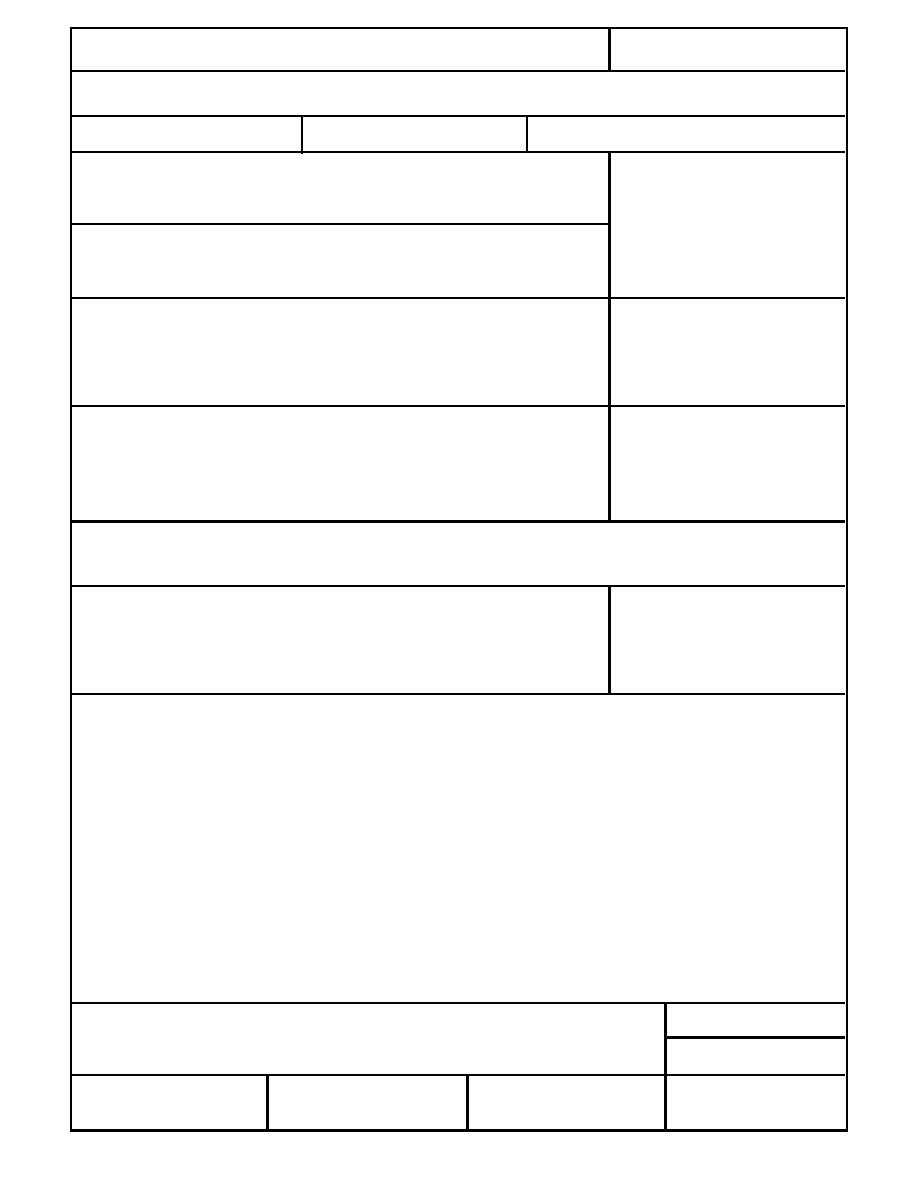
Form Approved
REPORT DOCUMENTATION PAGE
OMB No. 0704-0188
Public reporting burden for this collection of information is estimated to average 1 hour per response, including the time for reviewing instructions, searching existing data sources, gathering and
maintaining the data needed, and completing and reviewing the collection of information. Send comments regarding this burden estimate or any other aspect of this collection of information,
including suggestion for reducing this burden, to Washington Headquarters Services, Directorate for Information Operations and Reports, 1215 Jefferson Davis Highway, Suite 1204, Arlington,
VA 22202-4302, and to the Office of Management and Budget, Paperwork Reduction Project (0704-0188), Washington, DC 20503.
1. AGENCY USE ONLY (Leave blank)
2. REPORT DATE
3. REPORT TYPE AND DATES COVERED
May 1997
4. TITLE AND SUBTITLE
5. FUNDING NUMBERS
Collecting Micrometeorites from the South Pole Water Well
6. AUTHORS
Susan Taylor, James H. Lever, Ralph P. Harvey, and John Govoni
7. PERFORMING ORGANIZATION NAME(S) AND ADDRESS(ES)
8. PERFORMING ORGANIZATION
REPORT NUMBER
CRREL Report 97-1
U.S. Army Cold Regions Research and Engineering Laboratory
72 Lyme Road
Hanover, New Hampshire 03755-1290
9. SPONSORING/MONITORING AGENCY NAME(S) AND ADDRESS(ES)
10. SPONSORING/MONITORING
AGENCY REPORT NUMBER
National Science Foundation
Arlington, Virginia 22230
11. SUPPLEMENTARY NOTES
12a. DISTRIBUTION/AVAILABILITY STATEMENT
12b. DISTRIBUTION CODE
Approved for public release; distribution is unlimited.
Available from NTIS, Springfield, Virginia 22161
13. ABSTRACT (Maximum 200 words)
A collector was designed and built to retrieve micrometeorites from the floor of the South Pole Water Well. The
large volume of firn and ice being melted for the well and the low component of terrestrial material in Antarctic ice
make the South Pole Water Well an ideal place to collect micrometeorites. Because the age of the ice being melted is
known, yearly or periodic collections provide large numbers of micrometeorites of known terrestrial age. The
collector was designed to pose no threat to the well's water quality, to be reliable and easy to operate, and to collect
particles larger than 50 m. This report details how this collector was built and tested and documents the rationale
behind some of the design choices. It also includes preliminary findings from the first deployment.
14. SUBJECT TERMS
15. NUMBER OF PAGES
Antarctica
Micrometeorites
Water well
42
Cosmic dust
South Pole
16. PRICE CODE
17. SECURITY CLASSIFICATION
18. SECURITY CLASSIFICATION
19. SECURITY CLASSIFICATION
20. LIMITATION OF ABSTRACT
OF REPORT
OF THIS PAGE
OF ABSTRACT
UNCLASSIFIED
UNCLASSIFIED
UNCLASSIFIED
UL
Standard Form 298 (Rev. 2-89)
NSN 7540-01-280-5500
Prescribed by ANSI Std. Z39-18
298-102



 Previous Page
Previous Page
